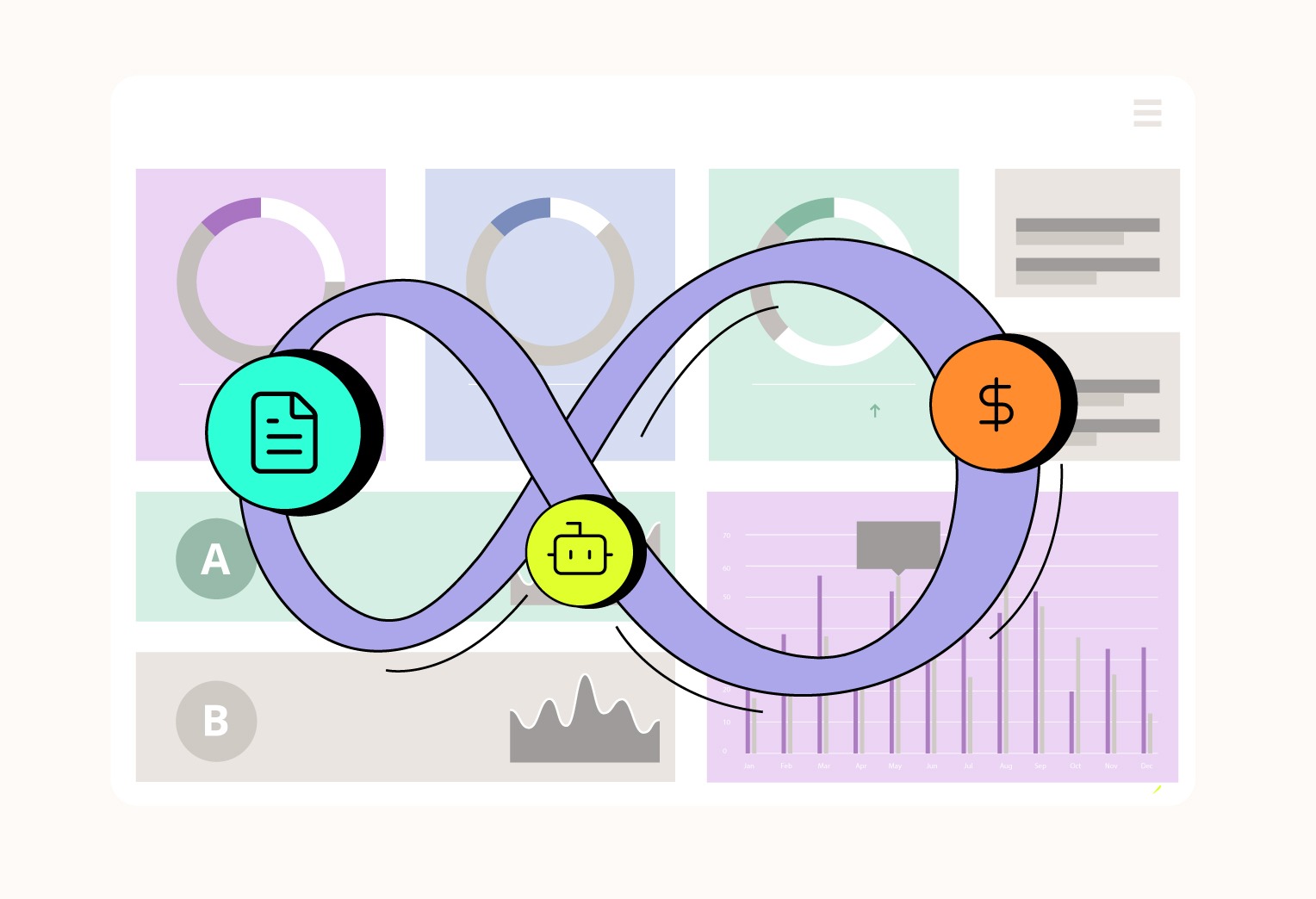The Institute of Financial Operations celebrates accounts payable (AP) every second week of October. This aims to boost fellow AP leaders without whom companies cannot function. Companies that do not manage AP processes well may struggle with untimely invoice processing, missed discounts, and unfavorable payment terms with suppliers thus leading to poor cash flow and operational excellence.
So, what is the solution, one might wonder? Three words, Accounts Payables Observability.
Account Payables Observability or AP Observability provides continuous monitoring across all key AP metrics, thus enhancing transparency and providing invaluable insights to improve cash flow management and supplier relationships.
Today, let us explore the concept of accounts payable observability and delve into the benefits companies enjoy with simple changes to their Finance operations. Additionally, let us together discover how Bluecopa’s AP observability empowers organizations to achieve greater efficiency around the same.
Through this, you will infer:
- What is accounts payable observability
- Pain points of accounts payable management
- Its benefits
- Key metrics of AP observability
- Example of how a leading record label ensures accurate payouts
- Implementing AP observability with Bluecopa
- Final ideas
Let’s dive right in.
Understanding accounts payable observability
Accounts payable observability is the ability to gain insights into the internal state and functioning of the accounts payable process. It involves collecting and analyzing data from all aspects of the process, including invoice processing, vendor management, and payment processing.
Accounts payable observability can be used to identify bottlenecks, inefficiencies, and fraud in the accounts payable process. It can also be used to improve the visibility and control of the process and to make better financial decisions.
Pain points of accounts payable management
Despite its importance, AP management often comes with several pain points:
Invoice Processing Delays: Manual data entry and cumbersome approval workflows can lead to delays in invoice processing.
Errors and Discrepancies: Human errors in data entry can result in inaccuracies and discrepancies in AP records.
Limited Visibility: Lack of visibility into AP workflow can make it challenging to identify the bottlenecks and rectify them in real-time.
Compliance Risks: Non-compliance with payment terms or regulations can result in penalties and damage the company's reputation.
The benefits of AP observability
#1 Enhanced financial transparency
AP Observability provides a clear, real-time view of all your financial obligations. This allows for more accurate financial reporting and forecasting, which is essential for making informed business decisions and providing an accurate forecast to the Leadership and Board.
#2 Improved cash flow management
Efficient management of accounts payable is critical for maintaining healthy cash flow. With observability, you can identify bottlenecks, prioritize payments, and optimize your working capital to ensure you have enough liquidity to cover expenses and investments for a definite period.
#3 Early detection of anomalies
By monitoring your accounts payable processes in real-time, you can quickly identify discrepancies, errors, or potential fraud. Early detection enables prompt resolution, minimizing losses and reputational damage.
#4 Streamlined workflow
Visibility into accounts payable processes allows for streamlining and automating repetitive tasks. This reduces manual errors, accelerates approvals, and frees up valuable time for your finance team to focus on strategic initiatives.
Key metrics to track and monitor within AP Observability
Here are some metrics for accounts payable observability templates:
- Average payment time (APT): APT is the average number of days it takes to pay an invoice. This metric can be used to identify bottlenecks and inefficiencies in the accounts payable process.
- Percentage of invoices paid on time (%): This metric measures the percentage of invoices that are paid within the agreed-upon payment terms. This metric can be used to track the performance of the accounts payable process and to identify areas for improvement.
- Percentage of invoices paid late (%): This metric measures the percentage of invoices that are not paid within the agreed-upon payment terms. This metric can be used to identify vendors who are not paying their invoices on time and to assess the financial impact of late payments.
- Number of late payment fees: This metric measures the number of late payment fees that are incurred each month. This metric can be used to track the cost of late payments and the loss incurred.
- Number of fraud incidents: This metric measures the number of fraud incidents that are detected in the accounts payable process each month. This metric can be used to track the effectiveness of fraud prevention measures and to identify areas for improvement.
- Vendor satisfaction: This metric measures the satisfaction of vendors with the accounts payable process. This metric can be used to identify areas for improvement and to ensure that the accounts payable process is efficient and effective.
- Net purchases: The total value of goods and services purchased by a company during a period, minus any returns or discounts. This becomes a crucial factor while measuring burn.
- Accounts payable: The amount of money that a company owes to its suppliers for goods and services that have been purchased but not yet paid for.
- Net purchases trend: The change in net purchases over time. It helps in understanding how a company is transitioning with regard to growth.
- Accounts payable trend: The change in accounts payable over time.
- Cost per invoice: The average cost of an invoice.
- Days payable outstanding: The average number of days it takes a company to pay its bills.
- Accounts payable turnover ratio: Measures how often a company pays its bills during a period. This helps CFOs and especially the Treasury Unit to be better prepared for upcoming payments.
Example of how a leading record label ensures accurate payouts
A global record label has grown, expanded into new markets, and onboarded new artists. This has led to an increase in the number of royalty payments it needs to make.
To streamline its operations and reduce the risk of errors, it implemented an AP observability solution. This solution provides real-time visibility into all AP data, including invoices, payments, and vendor information. It also automates many of the tasks involved in the AP process, such as invoice matching and approval.
As a result of implementing AP observability, it has reduced the time it takes to process payments by 36 days and improved the accuracy of payments. Precisely, it helped in achieving two things—
#1 Consolidating operations into a single system
Before implementing AP observability, it used a manual system to process payments. This system was time-consuming and error-prone. The company also had to maintain separate systems for each of its global entities.
AP observability allowed it to consolidate all of its AP operations into a single system. This has made it easier for the company to track payments and manage its global operations.
#2 Saving time and increasing data accuracy
AP observability has helped save time and improve the accuracy of its payments. The solution automates many of the tasks involved in the AP process, such as invoice matching and approval. This has freed up staff to focus on more strategic tasks.
AP observability has also helped improve the accuracy of its payments. The solution provides real-time visibility into all AP data, which allows the company to quickly identify and resolve any issues that may arise.
Implementing AP observability with Bluecopa
One of the platforms with a unique approach to solving these AP concerns is the Accounts Payable Observability by Bluecopa. As the comprehensive finance observability platform, Bluecopa is designed to help organizations gain better control over their AP amongst many other Finance operations processes.
Let's explore how Bluecopa enables businesses to unlock the benefits of account payables observability.
Real-time tracking and monitoring: Bluecopa offers real-time tracking of invoices, payments, and other accounts payable data. This means you can see the status of every transaction as it happens, enabling you to take immediate action when needed.

Seamless data flow from multiple sources: Bluecopa seamlessly integrates with all financial systems thus gathering data from multiple places to build a unified and consolidated report, dashboard, and statement enhancing your operational excellence by many folds.
Analytics and reporting: Bluecopa offers you out-of-the-box reporting with powerful analytics that allow you to measure the performance of your AP workflows at any time. You can track key metrics, identify trends, and make data-driven decisions to optimize your processes.

Compliance and security: Bluecopa highly prioritizes compliance and security. The platform meets all industry standards ensuring that your accounts payable processes comply with all data security regulations. Furthermore, it includes robust security measures to protect sensitive financial data from internal and external people through role-based access control (RBAC).
Final ideas
Account payables observability is no longer a luxury but a necessity for businesses looking to thrive. The benefits are clear, from enhanced financial transparency to improved cash flow management and stronger supplier relationships.
Bluecopa, with its cutting-edge features and capabilities, empowers organizations to harness the full potential of account payables observability. By adopting this innovative platform, businesses can streamline their accounts payable processes, reduce risks, and drive greater efficiency in their financial operations. Hop in on a demo to learn more.
You might also like
Here are some other posts from us you may enjoy reading!
Account Receivable Observability: Gaining Clarity in Financial Management




.jpg)